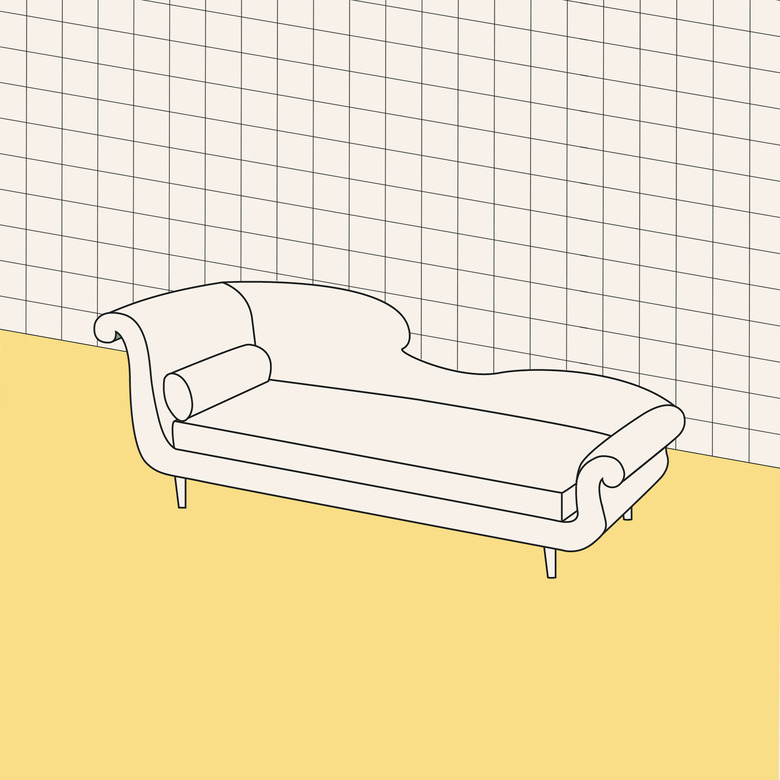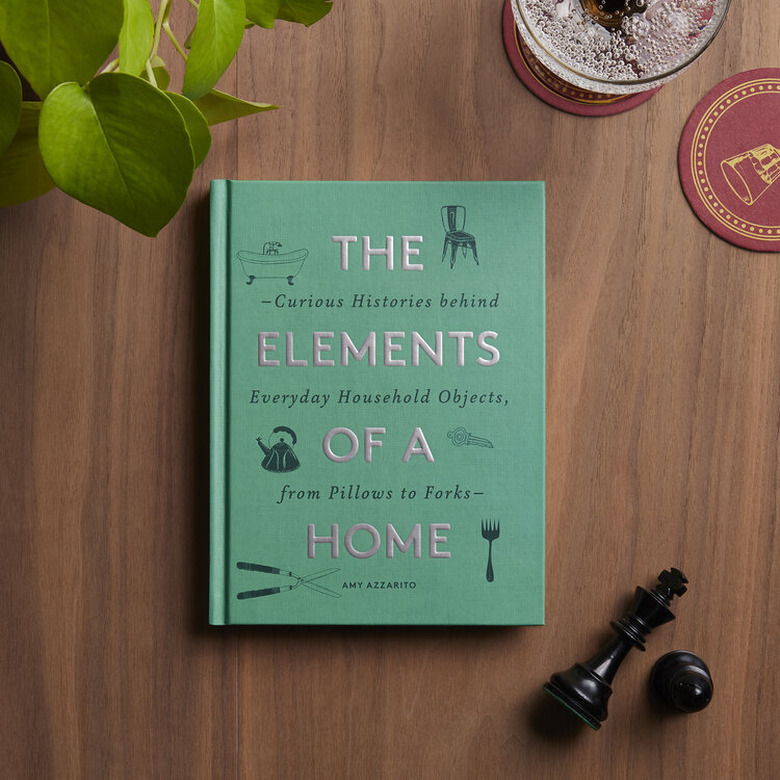The Chaise Longue's History Includes Corsets, Old Hollywood, And Therapy
We may receive a commission on purchases made from links.
Reprinted from Elements of a Home by Amy Azzarito with permission by Chronicle Books, 2020.
The chaise longue is extravagant in its impracticality. No one needs a piece of furniture that looks like a stretched-out armchair. The French name simply means "long chair," and almost everyone pronounces it the wrong way. Most of us say chaise (shayz) correctly, but longue is where the linguistic rubber meets the road. It's lawng, not lounge. In fact, language usage expert Bryan A. Garner calls saying or writing "chaise lounge" an "embarrassing error" and distinctly "low-rent." Ouch. So unless your French is on point, just call it a chaise.
Its lineage can be traced back to ancient Egyptians, who originated the blend of a chair and a daybed. The chaise was the perfect seat for a languid midafternoon respite from the desert sun (often while being fanned by a servant). The Greeks, and later the Romans, put the piece to work in their homes and used it for sitting (or rather, reclining) at the table. The wooden chaise was made comfortable with pillows, loose covers, and the pelts of exotic animals like zebras and leopards. But when dining while lying down fell out of favor during the Middle Ages (too much a reminder of the self-indulgent Romans), the chaise was retired as well.
That is, until the eighteenth century, when lounging, which spread from France through all of Europe, became the preferred way to while away an afternoon (Marie-Antoinette style with champagne coupe in hand). The chaise was perfectly suited for the task. Unlike the Roman version, which was the purview of the masculine diner, this time it was a feature of a lady's boudoir.
At the start of the nineteenth century, the chaise had its shining moment. The famous French painter Jacques-Louis David painted the alluringly beautiful twenty-three-year-old socialite Madame Récamier seductively reclining on one, her feet bare. The portrayal shocked even the louche Parisians; at the time, women were expected to cover their naked feet with a small embroidered silk throw when receiving guests.
The portrait was a marketing coup for the chaise that would have made Madison Avenue proud. Even in 1800, sex sold. The Victorians moved the chaise longue out of the boudoir and into their over-furnished living rooms. It stood ready to catch a lady who was dizzy and short of breath as a consequence of her too-tight corset (thus giving it the name the "fainting couch").
It also became a core element of late-nineteenth-century Freudian psychoanalysis. Early in his career, Sigmund Freud used hypnosis to treat his clients. He found that they were more relaxed, open, and receptive to suggestions when they lay down, facing away from him. Though Freud eventually abandoned hypnosis as a technique, he continued to use the chaise when treating patients. In fact, a chaise covered in a red Turkish carpet took center stage in his London office. In the 1930s, the chaise longue moved from the psychoanalyst's office to the silver screen. Any leading lady worth her salt — Greta Garbo, Jean Harlow, Gloria Swanson — draped herself seductively across one for photos and film shoots, generally clothed in a low-cut, spaghetti-strap satin nightgown. Today, it remains a staple of photo shoots for movie stars, fashion models, and even the occasional business executive looking to infuse femininity into her image.
In 1986, inspired by Madame Récamier's portrait, Australian designer Marc Newson created the Lockheed Lounge to emulate a "globule of mercury." (Possibly he found her languid posture resembled the liquid element.) He covered a foam prototype with sheets of pounded aluminum held together with rivets, giving the piece the look of a Lockheed plane. It was sold at auction in 2015 for $3.7 million, breaking all sales records for a single work by a living designer. (It certainly didn't hurt marketing efforts that Madonna had featured it in her 1993 music video for "Rain.")
Today's fast-paced lifestyle doesn't allow much time for lounging, and for the most part, the stand-alone chaise longue has been replaced by sofas and chairs in our public and private living spaces. But if you have the space, you can find a sectional with a chaise add-on that just might be enough to tempt you into slowing down.
Want more juicy history of household objects? Check out Amy Azzarito's new book, The Elements of a Home, available at bookstores everywhere:

